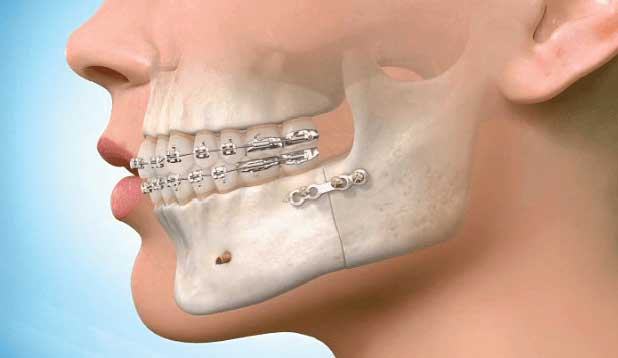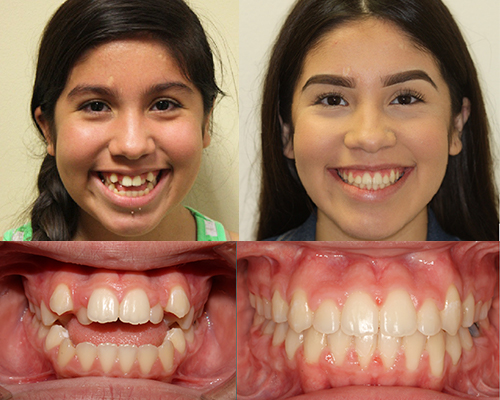Whatever You Need to Know Concerning Braces, Aligners, and Retainers
Orthodontic treatments such as aligners, retainers, and dental braces play an essential function in attaining a straighter and healthier smile. Each of these orthodontic appliances offers a specific function in remedying oral imbalances and bite issues. From conventional braces to modern-day aligners, there are numerous choices offered to satisfy private requirements and preferences. Comprehending the distinctions, advantages, and upkeep requirements of these orthodontic tools is necessary for any individual considering enhancing their dental alignment. The journey to a perfectly aligned smile includes even more than just aesthetics; it impacts overall dental health and health.
Kinds Of Orthodontic Treatments
Orthodontic treatments encompass different techniques aimed at correcting and aligning teeth for enhanced oral wellness and appearances. The most typical type of orthodontic therapy is traditional braces, being composed of metal brackets bound to the teeth and attached by wires. These braces slowly change teeth into the preferred placement via routine changes by an orthodontist.
Another prominent alternative is ceramic braces, which are less recognizable than metal braces due to their clear or tooth-colored brackets. Lingual dental braces are affixed to the back of the teeth, making them basically undetectable from the outside. For those looking for a more discreet choice, clear aligners like Invisalign supply a detachable and clear choice to conventional braces.

Pros and Cons of Dental Braces
When considering orthodontic treatment alternatives, it is vital to consider the benefits and downsides of dental braces. Braces are very effective in dealing with a vast array of dental concerns such as crooked teeth, congestion, imbalance, and bite issues. One of the primary benefits of dental braces is their integrity in delivering foreseeable and precise results over a defined therapy duration. They are also suitable for clients of any ages, making them a flexible alternative for orthodontic care. Additionally, braces can aid boost dental wellness by boosting the placement of teeth, which can reduce the risk of dental caries, gum disease, and other dental problems in the long run.
An additional visual factor to consider is the visibility of traditional metal braces, which may impact the wearer's self-confidence throughout therapy. Regardless of these drawbacks, the proven effectiveness of dental braces in achieving optimal dental placement often surpasses the disadvantages for numerous clients.
Benefits of Aligners
An increasingly popular alternative to conventional braces, aligners supply numerous benefits in orthodontic treatment. One of the vital benefits of aligners is their virtually undetectable appearance, making them a very discreet choice for individuals looking for to align their teeth without accentuating their orthodontic therapy. Aligners are likewise detachable, allowing patients to conveniently brush and floss their teeth, resulting in far better oral health during treatment contrasted to conventional dental braces. This attribute also suggests that there are no food restrictions, giving more flexibility in nutritional options.
Furthermore, aligners normally call for fewer brows through to the orthodontist you can try these out for adjustments, as compared to dental braces, which can be a convenient aspect for individuals with hectic schedules. The treatment process with aligners is often extra comfortable, as there are no metal brackets or cables that might cause inflammation to the mouth. Furthermore, aligners can commonly achieve lead to a much shorter timespan than traditional braces, depending upon the complexity of the orthodontic concerns being resolved.

Value of Retainers
The significance of retainers in maintaining orthodontic therapy results can not be overstated. Retainers play an essential role in maintaining the outcomes achieved through braces or aligners. After the first phase of orthodontic treatment, where braces or aligners are made use of to straighten teeth and right bite concerns, retainers are important for stopping the teeth from moving back to navigate to these guys their original setting.
Retainers assist to stabilize the teeth in their new straightened position, permitting the supporting frameworks in the mouth to adapt to the adjustments. Without appropriate retainer wear, there is a threat of relapse, where the teeth progressively move back in the direction of their pre-treatment positioning. This can reverse all the development made throughout the orthodontic treatment, leading to the demand for additional treatment.
It is recommended to put on retainers as directed by your orthodontist to keep the results of your therapy in the long-term. Typically, retainers are at first worn full time and then transitioned to nighttime wear once the orthodontist identifies it is appropriate. Constant retainer usage is essential to making sure a long lasting, attractive smile.
Maintenance Tips for Orthodontic Devices
When wearing braces, it is essential to maintain good oral hygiene by brushing after every meal and flossing daily to prevent plaque buildup. Avoiding hard, sticky foods can likewise protect against damage to the braces.

Final Thought
To conclude, orthodontic treatments such as braces, aligners, and retainers play an essential role in fixing oral concerns and Going Here boosting overall dental health and wellness. Each treatment alternative has its own advantages and disadvantages, and it is very important to comply with correct maintenance tips to make certain the efficiency of the devices. Whether it is dental braces for more serious cases or aligners for an extra discreet alternative, consulting with an oral expert will aid figure out the best therapy plan for specific needs.
Orthodontic therapies such as aligners, braces, and retainers play a crucial function in attaining a straighter and healthier smile.Another popular alternative is ceramic dental braces, which are less obvious than steel braces due to their tooth-colored or clear brackets.In some cases, after dental braces or aligner treatment, retainers are necessary to maintain the newly straightened setting of the teeth. After the preliminary stage of orthodontic therapy, where aligners or braces are utilized to align teeth and right bite concerns, retainers are important for stopping the teeth from changing back to their initial position.
In conclusion, orthodontic treatments such as dental braces, retainers, and aligners play a crucial role in remedying oral problems and enhancing total dental wellness. - orthodontics